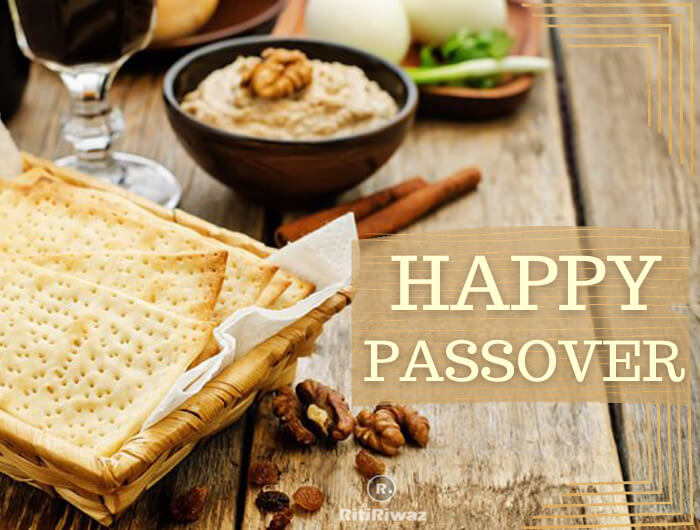Passover Holiday 2025

The Jewish holiday of Passover is one of the most widely celebrated holidays in the Jewish calendar. Passover (Pesakh in Hebrew) is a holiday that celebrates the Jews’ liberation from slavery in Egypt. It is a spring festival and therefore starts on the second full moon after the vernal equinox.
Passover begins on the 15th day of Nisan, the first month of the Jewish calendar, and typically begins in late March or early April, and ends on the 21st of Nisan in Israel and the 22nd of Nisan elsewhere. Some traditions celebrate Passover for seven days, while others observe the holiday for eight days.
In 2025 the first night of Passover begins on Saturday, April 12th, and ends in the evening of Sunday, April 20th.
Passover Ritual
The main ritual of Passover is the seder, which occurs on the first two nights (in Israel just the first night) of the holiday — a festive meal that involves the re-telling of the exodus through stories and song and the consumption of ritual foods, including matzah and maror (bitter herbs). The seder’s rituals and other readings are outlined in the Haggadah (Passover guide). The most essential ritual is the sharing of the seder meal. This feast of unleavened bread is observed by Jews as a major festival of Israel. Christians do not observe Passover but observe Good Friday which is believed to have its roots from the Feast of Passover.
It has been marked every year since about 1300 BC and involves ceremonial food, special prayers, and the Passover Seder night. Because the Seder (the traditional Passover dinner) is organized around telling the Passover story, it’s an opportunity for Jews to connect themselves with their history; to think more consciously about those who are still oppressed today, and to hope that people today will know freedom. Many Jews make an effort during the Seder to connect the suffering of ancient Jewish slaves to the contemporary oppression of Jews and all people, addressing ethnic strife and migrant rights, poverty, or other issues.
History
Passover is the celebration of the event that led to Moses guiding the Israelites out of Egyptian captivity, a story that’s found in both the Hebrew and Christian bibles. The Egyptians had enslaved the Israelites for hundreds of years when Moses went to the Pharaoh of Egypt and told him to let the Israelites go. The Pharaoh refused, so God sent 10 plagues, each one more damaging than the next.
For the final plague, God sent the angel of death in the middle of the night to kill every firstborn son in Egypt. To show that the Israelites were the chosen people, they were given specific instructions to avoid death. They were told to place the blood of a lamb around the doors of their homes so the angel of death would know to “pass over” their homes. When the pharaoh woke to find his firstborn and all the firstborn sons and animals of Egypt died, he ordered the Israelites out of Egypt.
How to celebrate Passover
Passover also distinguishes itself from other Jewish holidays because it’s a holiday primarily celebrated in the home, rather than a synagogue. This can make the holiday feel more like Thanksgiving than like a traditional, dress-up-and-go-to-services holiday.
Cleaning
During Passover Jews refrain from eating chametz, food with leavening such as bread, cookies, or pasta. Before Passover begins, families will clean their homes to clear out the chametz. Leavened foods are banished from the household throughout the holiday; some Jews extend this to rice, corn, and legumes, though that is a custom and not required. All the chametz, are thrown out or burned the next morning before the holiday officially begins.
Eating Matzah
During Passover, you’ll probably eat matzah, a cracker-like bread substitute representing the bread that didn’t have time to rise when the Jews fled Egypt.
The Seder
During the first two nights of Passover, families, and friends gather for a religious feast called the Seder, this ritualistic meal at the heart of Passover. It is a multi-sensory experience that includes a recounting of the Exodus through stories, songs, blessings, foods, dramatizations, and discussions.
Sedar Plate
Karpas – Greens symbolizing the freshness of spring. These are dipped in salt water, which symbolizes the tears of slavery.
Kharoset – A sweet condiment, often made from apples, wine, nuts, and cinnamon, symbolizing the mortar used by slaves.
Beitza – A roasted egg symbolizing renewal, spring, and the offering historically made during this season at the time of the Second Temple in Jerusalem.
Maror – Bitter herbs symbolizing the bitterness of slavery.
Zeroa – A roasted bone symbolizing the sacrificial Passover lamb and God’s outstretched arm, which led the Jews out of slavery in Egypt.
The Haggadah
The story of Passover is told aloud from a special text called the Haggadah.
The families gather to engage in rituals that correspond to different aspects of the narrative being performed. Some of the rituals commonly performed include dipping vegetables into salty water. This is done to show the tears Jews shed during their time of enslavement.
Passover is the time when Jews remember that God remembered them.
